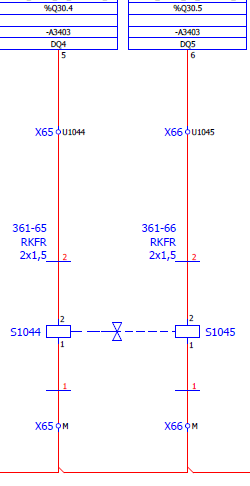Indy
Industrial
- Dec 14, 2012
- 172
Hi,
With regards to a Siemens DO card which has outputs rated 0.5A@24VDC if we are using these output channels to power 24VDC solenoid valves (0.3W &7w)would these require interposing relays as they are within the limits of the channel?
Thanks
With regards to a Siemens DO card which has outputs rated 0.5A@24VDC if we are using these output channels to power 24VDC solenoid valves (0.3W &7w)would these require interposing relays as they are within the limits of the channel?
Thanks


![[bigglasses] [bigglasses] [bigglasses]](/data/assets/smilies/bigglasses.gif)
![[bugeyed] [bugeyed] [bugeyed]](/data/assets/smilies/bugeyed.gif)
![[ponder] [ponder] [ponder]](/data/assets/smilies/ponder.gif) .
.